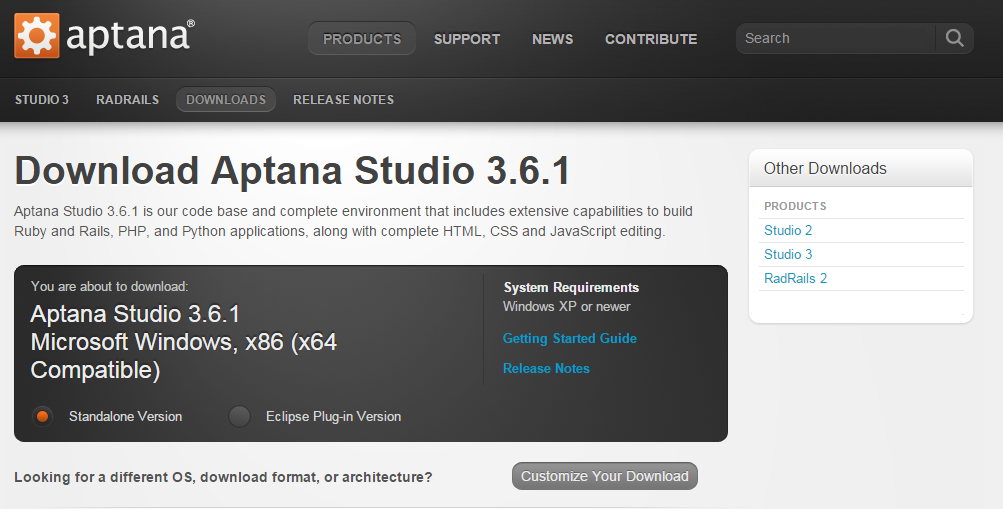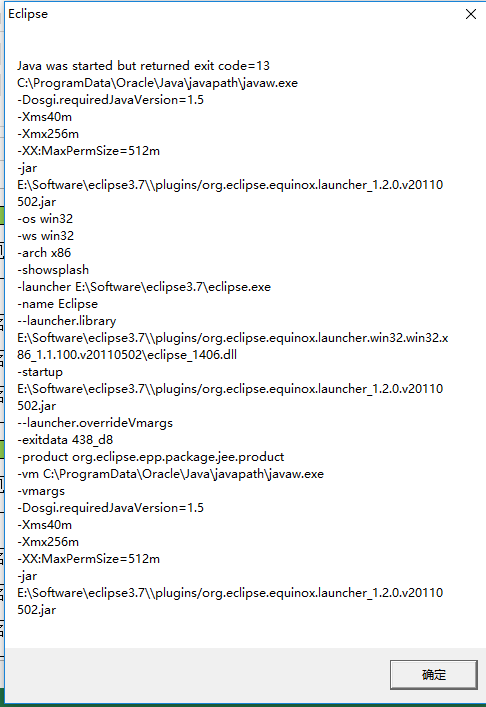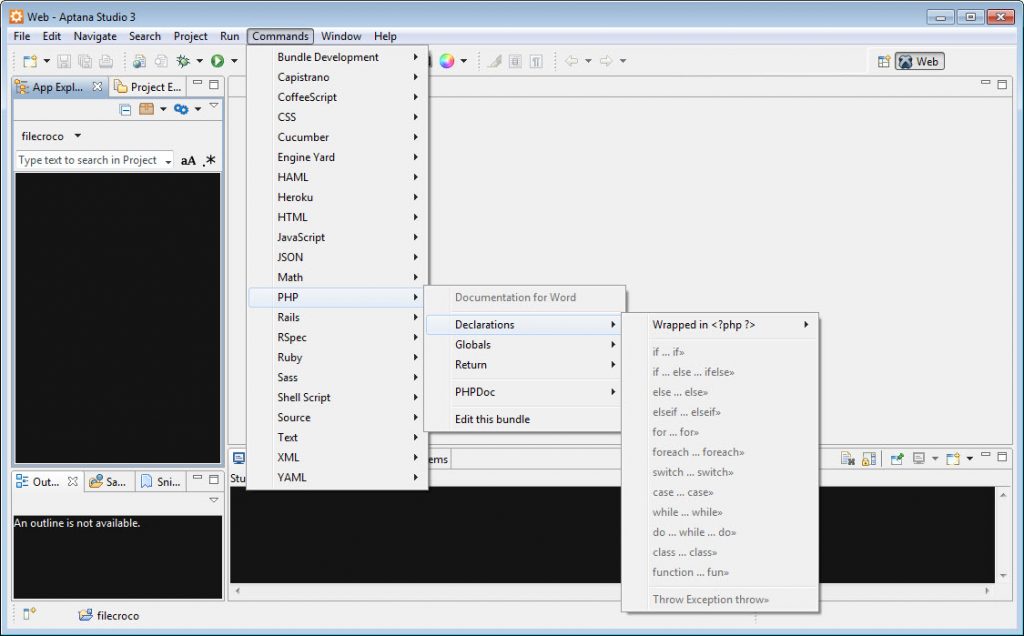

- #Aptana studio 3 java was started but returned exit code 13 install#
- #Aptana studio 3 java was started but returned exit code 13 software#
- #Aptana studio 3 java was started but returned exit code 13 windows#
#Aptana studio 3 java was started but returned exit code 13 install#
nvm: Change Node versions without having to install and re-install them each time.
#Aptana studio 3 java was started but returned exit code 13 windows#
curl: Make HTTP(S) requests to test your web apps (default for POSIX but can get for Windows too). docker: Build and run Docker containers to isolate app environment, speed up deployment and eliminate conflicts between dev and prod (or any other) environments. node-inspector: Debug Node code in a familiar interface of DevTools (now part of Node starting with v7). node-static: Serve files over HTTP web server. node-dev: Monitor and restart your Node app automatically on any file change within the current folder. Unlike the previous section, these tools are okay to install globally since most likely their version won’t affect or break your project. However, I don’t want to give too many options and confuse you with the differences, I listed only one tool (typically the one I use the most currently). For example, request and superagent are also extremely popular HTTP agent libraries. Of course there are a lot of different options in each category. However, installing them globally is an old practice and currently is an anti-pattern because local installation allows developers to use multiple versions of the tool with different projects in addition to have these tools specified in package.json. Note: Some of the libraries/tools listed above like webpack or mocha, can be installed globally instead of locally in your project folder. concurrently: Allows to execute CLI tools (local) as multiple processes all at the same time, e.g., webpack and node-static. async: Controls flow by running function concurrently, sequentially or any way you want. passport: OAuth library to quickly integrate with major services. node-oauth: Low-level but very mature and tested library to roll out any OAuth integration. cheerio: jQuery syntax for working with HTML-like data on the server. socket.io: Real-time library with support of Web Sockets and others. 
sequelize: PostgreSQL object-relational mapper library.mongoose: MongoDB object-document mapper library.express: the most popular Node web framework.babel: Allows to code in the latest versions of JavaScript/ECMAScript without having to worry about your runtime by converting the new code to the code compatible with older versions of ECMAScript.It allows to use node modules in the browser. webpack: Builds static assets like browser JavaScript, CSS and even images.

The libraries are listed with the npm names, so you can execute npm i with the name of the package/module: Node developers use most of these modules (or alternatives) in almost all of their projects. Here’s the list of the most used and most popular modules which you would install as dependencies of your projects. The most popular and useful libraries and project dependencies Both of them offer a wide variety of packages and themes. So try VS Code and Atom and see which one you like more. I have heard good things about VS Code and their smart autocomplete is a nice thing, but I didn’t find it a good enough reason for me to switch from Atom. What to pick? Any of the three in the list is good choice. There are more options like Brackets, Sublime Text 3 and of course IDEs like Eclipse, Aptana Studio, NetBeans, Komodo IDE, and cloud-based like Cloud 9, Codenvy.
WebStorm: more of an IDE than an editor, developed by JetBrains and based on IntelliJ platform has code assistance, debugging, testing, Git. VS Code: a newer addition uses similar to Atom web-based tech was created from Azure’s Monaco editor comes with debugging, smart autocomplete based on types, Git and terminal support. Atom: created and maintained by GitHub uses Electron, HTML, JS and CSS under the hood which makes it very easy to customize or add functionality allows to have Git and terminal support via packages. The files are just plain text files with the. Node is interpreted, thus there’s no need to compile it. Of course an IDE will do more for you but this comes with a learning curve and the need to configure. When it comes to your primary tool, the code editor, I recommend sticking with lighter and simpler editors like Atom or VS Code instead of full-blown IDEs like Webstorm. I bet you are one of them! Read on to find out the best Node tools for development. #Aptana studio 3 java was started but returned exit code 13 software#
I get this question very often: “What tools would you recommend for Node development?” Software engineers love to optimize and increase productivity instead of wasting their time.







 0 kommentar(er)
0 kommentar(er)
